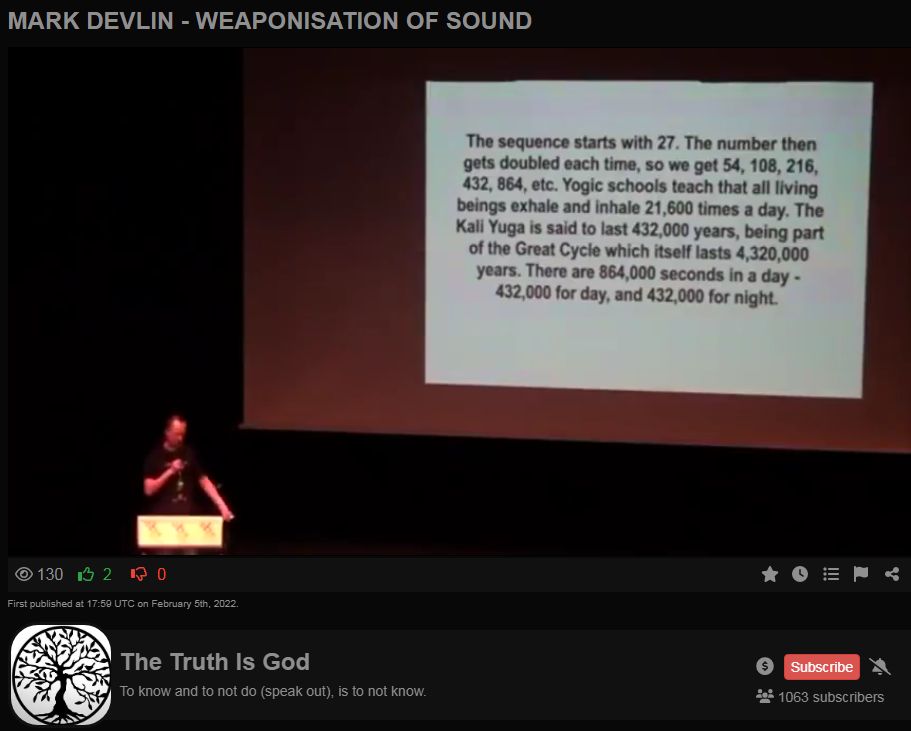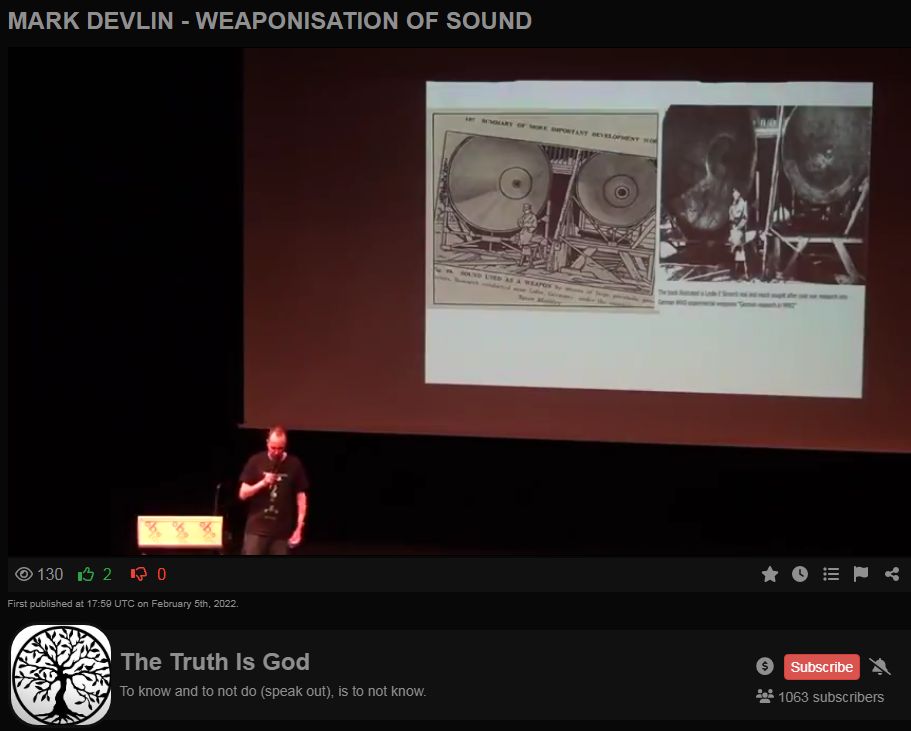Weaponization of Sound
The Weaponization of Sound: A Deep Dive with Mark Devlin
In the realm of modern warfare and cultural influence, sound has transcended its traditional boundaries, evolving into a tool for control, manipulation, and even aggression. The exploration of this phenomenon by Mark Devlin, a respected DJ, music historian, and author, sheds light on the profound impact sound can have when weaponized. From military applications like the Long Range Acoustic Device (LRAD) and Voice-to-Skull (V2K) technology to the subtler forms of cultural manipulation and the alleged involvement of military-intelligence in major bands, Devlin’s research unveils the multifaceted uses of sound that go far beyond simple auditory perception.
### Military Weapons: The Audible Force
The use of sound as a weapon is not a novel concept, yet its applications in modern military technology continue to astonish and alarm. The LRAD, for instance, is a sound cannon that emits sounds at extremely high decibels, capable of causing immediate pain and disorientation to those in its path. Its use in crowd control scenarios demonstrates the power of sound to dominate and suppress, showcasing its potential as a non-lethal yet profoundly impactful weapon.
Voice-to-Skull (V2K) technology presents an even more insidious use of sound. V2K can transmit voices or audio directly into the heads of individuals, bypassing traditional means of auditory perception. This technology, which could be employed for psychological warfare or covert operations, epitomizes the extent to which sound can infiltrate and influence the human mind.
### Cultural Manipulation Through Sound
Beyond the battlefield, sound has been weaponized in subtler, more insidious ways to manipulate societies and cultures. Mark Devlin’s work delves into how music and sound frequencies have been engineered to shape public behavior, moods, and attitudes. This manipulation ranges from the strategic use of music in advertising and political campaigns to influence consumer behavior and voter preferences, to more covert operations aiming at societal control.
Devlin argues that certain sound frequencies and musical compositions can have profound effects on the human psyche, inducing states of relaxation or agitation, happiness or sadness. This theory extends to the suggestion that major record labels and producers may deliberately manipulate music’s emotional content, controlling the cultural narrative and public sentiment on a massive scale.
### The Military-Intelligence Nexus in Music
Perhaps the most controversial aspect of Devlin’s research is the alleged involvement of military and intelligence agencies in the music industry. He suggests that since the mid-20th century, these entities have covertly influenced major music bands and trends to serve broader agendas, from promoting counter-culture movements to disseminating propaganda.
The involvement of intelligence agencies in cultural and artistic endeavors is not without precedent, as seen in the CIA’s support for abstract expressionism during the Cold War. According to Devlin, this manipulation extends into the music industry, with certain bands and artists being promoted not solely for their artistic merit but for their potential to influence public opinion and culture in ways that align with governmental and military objectives.
### The Implications of Sound Weaponization
The weaponization of sound, whether in overt military applications or covert cultural manipulation, raises profound ethical and legal questions. The use of sound weapons in crowd control, for instance, challenges principles of proportionality and necessity in the use of force, while the manipulation of music and sound frequencies for societal control touches upon issues of free will, consent, and the integrity of cultural expression.
Moreover, the alleged involvement of military and intelligence agencies in the music industry blurs the lines between art, propaganda, and psychological warfare, complicating our understanding of cultural movements and the genesis of musical trends.
### Conclusion
Mark Devlin’s exploration into the weaponization of sound presents a fascinating yet unsettling perspective on the power of sound to influence, control, and manipulate. From the stark realities of sound-based military technologies to the subtler forms of cultural manipulation and the shadowy influence of intelligence agencies in the music industry, Devlin’s work challenges us to reconsider the role of sound in our lives and its potential to shape our reality.
As we navigate an increasingly complex world where the boundaries between perception and manipulation are blurred, the need for awareness, critical thinking, and ethical consideration in the use of sound has never been more critical. Devlin’s contributions to this field serve as a crucial starting point for further research, debate, and, hopefully, a reevaluation of how sound is employed in both military and cultural domains.


